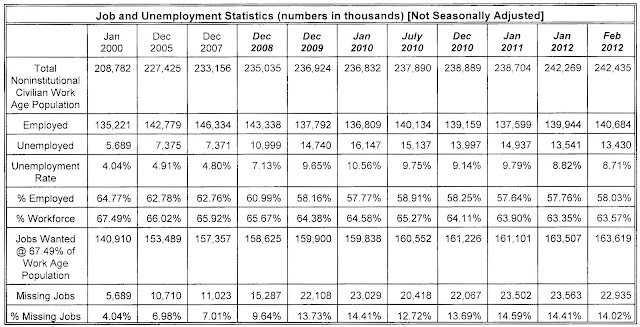- Congress does not have the power to compel a commercial activity an individual is not engaged in under the Commerce Clause, so the individual mandate to buy government-approved health insurance is unconstitutional.
- Congress cannot invoke the Necessary and Proper Clause under the taxing power as the source of the power to levy penalties because this is not proper. The amicus brief by the Washington Legal Foundation explains this argument.
- the new conditions on all federal Medicaid funding such as expanding eligibility, coverage for pre-existing conditions, and mandated services, constitute an unconstitutional coercion of the states as explained in this amicus brief. This argument is given some additional weight by virtue of the fact that a majority of the states have joined in the lawsuit opposing ObamaCare and the federal effort to take over the police power of the states guaranteed in the 10th Amendment.
This individual mandate is the first time Congress has made a law under its commerce power that allows an individual no means of escape from its compelling them to an action. The Founding generation understood that government should not have the power to force individuals to engage in commercial transactions against their will. Commercial transactions imply a contract and a contract has always required mutual consent in Anglo-American law. Contract law would be gutted in its entirety if this mutual consent requirement were disposed of and no contracts would then be binding upon the parties to the contract. A contract would be a concept without meaning.
The Institute for Justice amicus brief further argues that if Congress exercised a power to wipe out the doctrine of mutual assent, this would not be a proper action under the Necessary and Proper Clause. Chief Justice Marshall declared in McCulloch v. Maryland that a law was necessary and proper only if the end was legitimate and it was consistent with the letter and spirit of the Constitution. Compelling individuals to engage in commerce ends the concept of contractual mutuality of assent and is not consistent with the letter and spirit of the Constitution.
Destroying the principle of mutual assent is the last step in creating a general federal police power to control the lives, liberties, and property of the people and the internal order, improvement, and prosperity of the State. This general police power had been reserved to the States, as stated in The Federalist No. 45 by James Madison. The Supreme Court recently stated in Bond v. United States that the purpose of the Constitution's enumeration of powers and federalism was to protect the individual rights of the citizens. If Congress were allowed to force individuals to purchase health insurance under contract, this would destroy a fundamental precept of contract law and drastically reduce individual liberty.
David N. Mayer, Professor of Law and History, at Capital Law School, makes an additional argument on his blog. He says
There’s also a third major ground for finding the law unconstitutional – unfortunately, not an issue on which the Court granted certiorari (review), but an issue that ought to be raised in some of the other amicus briefs: that the law abridges individual freedom, particularly the right to health-care freedom (the right of individuals to decide for themselves whether they should have health-care insurance and, if so, what sort of coverage they have), a right that ought to be protected under the Fifth Amendment’s due process clause as a part of the fundamental right to liberty that clause protects. (This most powerful argument against “ObamaCare,” unfortunately, is also one that the Court likely will ignore, as it would require the Court to reverse some 70 years or so of precedents – of erroneous interpretation of the Constitution – following the so-called “New Deal revolution” of the late 1930s.)These arguments are all good arguments, but it seems very clear to me that the Founding generation intended the Constitution to provide us with a federal government which was legitimate as defined in the Declaration of Independence. Such a government, strictly constrained in power as the Constitution intended, was to have the purpose of protecting the equal, sovereign individual right to life, liberty, property, the ownership of one's own body and mind, and the pursuit of happiness. My addition of property and the ownership of one's mind and body is to remind today's ahistorical citizen that these rights are inseparable from the more briefly stated life, liberty, and the pursuit of happiness phrase of the Declaration of Independence. The citizen of the late 18th Century knew this.
One should be able to simply state the obvious fact that ObamaCare deprives the citizen of life by not allowing him to control his health and medical care as needed to preserve his life and to flourish in it, it deprives him of liberty, it turns the ownership of his mind and body over to a collective, and it denies him the right to pursue his happiness in many critical ways. It clearly violates the 9th Amendment protection of our essential individual rights not explicitly named in the Bill of Rights. Who then could have imagined that the federal government would try to control everyone's health and medical care.
It cannot be more clear that ObamaCare is an individual rights Obamanation, that synonym for abomination. Unfortunately, the modern American cannot hold a candle to the Founding Generation when it comes to individual rights. Even so, ObamaCare is such an obvious violation of the Constitution that 72% of Americans realize that it is unconstitutional. Let us hope that 55.55% of the Justices of the Supreme Court also understand this. We know that at least Justice Clarence Thomas Stands Sure on this, providing Liberty a sure 11.11%.
The family motto of the Scot Andersons is Stand Sure.












































































